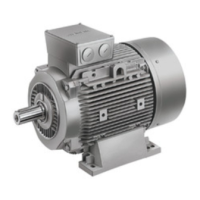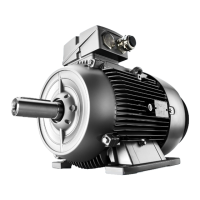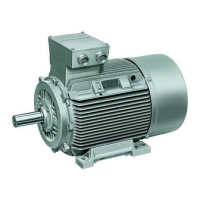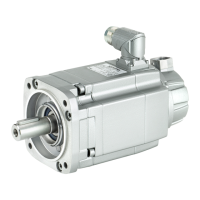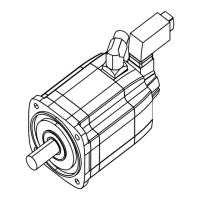As an alternative, you can connect the grounding conductor without cable lugs using a terminal
plate at the marked connection point.
Connecting the grounding conductor
● Ensure that the connecting surface is bare and is protected against corrosion using a
suitable substance, e.g. acid-free vaseline.
● Arrange the flat washer and spring washer under the bolt head.
● Check that the maximum permissible clamping thickness of 10 mm for the cable lug or strap
is not exceeded.
● Fasten the clamping screw according to the following table. Screw-in depth and tightening
torque are different depending on whether cable lugs or ground terminals are used.
Screw Screw-in depth Tightening torque
When using cable lugs M6 > 6 mm 8 Nm
M8 > 8 mm 20 Nm
M12 x 25 > 16 mm 38 Nm
M16 x 35 > 20 mm 92 Nm
When using grounding
terminals
M6 > 9 mm 8 Nm
M8 > 12 mm 20 Nm
M10 > 15 mm 40 Nm
M12 > 18 mm 70 Nm
M16 > 20 mm 170 Nm
● Use the connecting terminals designated for the grounding conductor in the terminal box.
See also
Converter operation (Page 77)
6.3.5 Radio-frequency grounding for converter operation
In converter operation, the converter emits RF alternating currents. To establish and RF-
specific optimal connection between motor terminal box and motor enclosure, you can use
flexible braided copper flat cables with low impedance and a broad frequency range.
Establish the radio-frequency ground connection with flat cables. Alternatively you can
establish the radio-frequency ground connection with cable lugs.
Electrical connection
6.3 Preparation
SIMOTICS TN Series N-compact 1LA8
Operating Instructions 05/2016 65
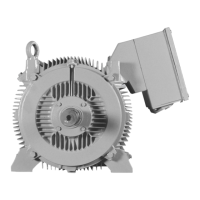
